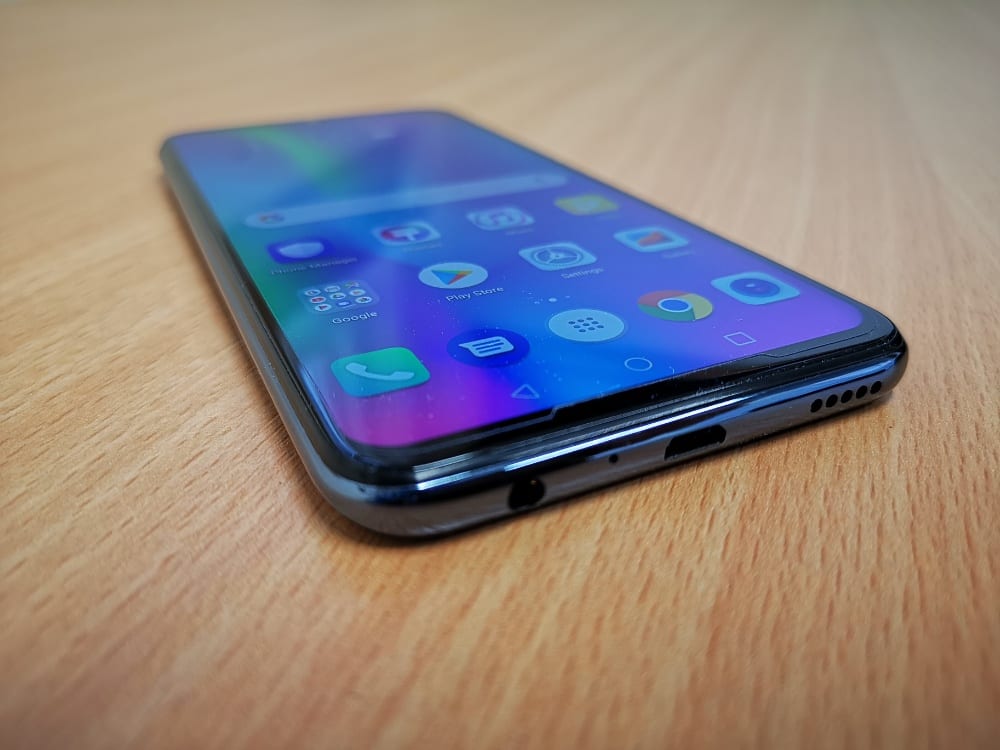
Honor 10 Lite Review: Get ready to activate smug-mode with this sub-£200 smartphone
Newsflash: Phones costing £1000 or more are seeing a reduction in sales. Who would have thunk it?! Thankfully, Honor has a cunning plan with a sub-£200 phone that is anything but low-budget.
Increasing prices in line with inflation is expected for most things we buy, but in the world of tech, prices usually fall thanks to advances in technology and economies of scale.

Honor 10 Lite – large screen, low price
Except in the last year or two, prices haven’t just risen in line with inflation; they’ve rocketed.
As sales fall, some companies have figured they can make up the shortfall by increasing profit margins.
Thankfully there are still a handful of players keen to offer affordable, yet well-specified, smartphones.
Honor is very well-established in this regard, although the recent entrance in the UK by Xiaomi is going to give some strong competition in 2019. And competition is good.
Where there’s Honor, there’s Huawei
As Huawei’s youthful sub-brand, the Honor 10 Lite is remarkably similar to the recently announced Huawei P Smart (2019), yet this variant is retailing at under £200, before any discounts and promotions.
Kitted out with Huawei’s mid-range Kirin 710 chipset, a decent amount of RAM and storage (3GB and 64GB), dual 4G, a 6.21-inch full-screen, 1080 x 2340 pixel, teardrop notched display, and the AI Camera features we’ve come to expect from all Honor and Huawei phones, this is a whole lot of phone for not a lot of money.
Interestingly, it’s the Honor 10 Lite that wins in the camera specs department despite the lower price.
Huawei has opted for a rear-mounted 13-megapixel and 2-megapixel dual-camera setup (the latter for depth measurement) with a front-facing 8-megapixel camera. Honor on the other hand has put a 24-megapixel camera up-front instead, making this a clear choice for selfie fans.

However, let’s get one thing out of the way before going further: The 10 Lite still has a micro USB charging port. Yes, really. That’s not a mistake in the spec sheet – it’s true. And for a phone going on sale in 2019, it really did surprise me as I am sure it will have done with everyone else reviewing the phone.
I won’t dwell on this too much, but in a nutshell, I get how it benefits people upgrading who have accumulated a load of microUSB chargers and cables, but there has to come a point where Honor allows its customers to move on.
USB-C is the new standard and everyone has to switch one day. It’s just putting off the inevitable.
However, when it comes to clinging on to the past, retaining a 3.5mm headphone socket is something few people will have an issue with. The only downside is that you won’t find an IP-rating with the phone. Put simply, don’t get the phone wet.
Design and build
My review model was the black version, which from the back is rather plain and nondescript and ideal for people who aren’t looking to draw attention to themselves.
The alternative is a blue/silver graduated tint that really stands out, or the tried-and-tested Honor colour; sapphire blue.
The logo and camera layout is designed to be properly seen when the phone is in the horizontal, photo or video taking position.
A clear plastic protective case also came with the review unit, but the inclusion of this may vary between retailers – so don’t be scared to ask before buying if this comes with it.


On the front, the rear-mounted fingerprint sensor has allowed for a 83% screen-to-body ratio display, with only a small notch in the middle for the selfie camera. This does mean there’s no secondary camera, or front-facing flash. Nor any clever face unlocking technology.
The sensor on the back is still one of my preferred positions. It’s fast and reliable. I’m sure one day we will get budget phones with in-glass sensors, but today isn’t that day and they’re currently not as quick to use anyway.
Being an LCD display, you can blank out the top of the screen to hide the notch but you won’t get the perfect invisible look like that of an OLED screen. Given the smaller notch in the first place, I opted to keep the notch visible, contrary to what I’ve done on other handsets with the feature.

Here, you get the choice to hide the notch all the time, or on an app-by-app basis. In fact, Emotion UI 9 has a wealth of features to customise the display, along with the usual power-management options, GPU Turbo 2.0, and more.
There’s NFC for Google Pay support, along with memory expansion at the expense of the second SIM. There’s even wireless screen sharing, albeit without the desktop mode that allows the viewing of a separate display to that of the phone.
What’s lacking, besides that USB-C port, is 5GHz Wi-Fi support and fast charging support. The battery itself is 3,400mAh which is less than that of the £230 Honor 8X, but not significantly so.

Camera
Given the design of the phone and the ‘AI Camera’ branding, it’s clear that Honor is pushing the camera credentials here. However, this is also where you can see a difference between a phone retailing at under £200 and phones costing three, four or even five times as much.
When I began taking photos, I saw the same thing as with earlier models. That’s a massive over-saturation of images in some recognised AI scenes, such as grass, trees and plants.
If you don’t mind things looking fluorescent then fine, but with no colour profiles (such as on the Leica-branded Huawei handsets) to choose from, you are pretty much stuck with a vivid colour profile for everything.
You can always manually edit photos after to reduce the saturation, or even turn the AI features off, but it does slightly ruin the camera experience. I would say that Honor needs to tone things down, or introduce colour profiles to allow you to tweak things to your satisfaction.
There is a manual professional camera mode, as well as an HDR mode, which will offer more flexibility.
It’s not that the camera is bad, but you may have to take a bit of effort to get things right.

Night warrior
The AI Stabilisation feature, which was so impressive when launched on the Huawei P20 Pro; allowing 4 or 5 second exposures without any blur (even when the phone is held in a hand and not secured on a tripod), has now filtered down through the handset portfolio and can be found on the Honor 10 Lite too.
Given the lower pixel count of the camera over higher-end models, you will get a fair degree of grain, but the results are still very impressive. You will get a sharp image that simply wouldn’t be possible without the clever AI-technology doing its bit.
As with other cheaper handsets I’ve reviewed that produce photos that don’t quite stand up to scrutiny on a big screen, you have to consider what you are wanting to use the camera for.
If it’s to cast photos to a big-screen TV, or make videos to share on YouTube, the Honor 10 Lite camera might not be for you. That’s of course why there are models with better cameras on sale, for a higher price obviously.
If you intend to share photos on WhatsApp,Snapchat, Facebook or Instagram then everything changes. While some pictures may need filtering and adjustment for the reasons already mentioned above, you’ll be just fine.
Video recording is acceptable too, albeit maxing out at 1080p resolution (30 or 60fps).
There are a number of fun filters available through the AR-lens feature of the camera, for both stills and video.

Camera images
Overall
While I’m not sure Honor can really keep selling so many different models with similar pricepoints, the Honor 10 Lite has done an excellent job of, once again, bringing features from high-end phones to a wider audience.
It has the necessary processing grunt to offer a smooth, lag-free, user experience, with a high-quality display and decent battery performance.
There’s even a punchy internal speaker should you want to play music or watch films on the go without headphones. Just not on the train, okay?
I’d have certainly liked to see a USB-C charger port, and perhaps fast charging support, but compared to the new Huawei P Smart which has USB-C and quite likely fast charging, I’m not sure it would be worth the extra money. At the time of publishing my review, Huawei hadn’t revealed the retail price but by my own estimations, I’d expect it to be selling for between £250 and £300.
Alongside the Honor Play and the Honor 8X, there’s now a lot to choose from if you want a phone with modern-day features, but without paying the modern-day pricing.
I can certainly recommend the Honor 10 Lite as a great little, highly-affordable, phone.
“Honor has done an excellent job of, once again, bringing features from high-end phones to a wider audience.”
Good Points
Large display with minimal notch
Impressive selfie camera quality
Fast CPU and GPU performance
Bad Points
MicroUSB charging port
Less than stellar camera quality
No fast charging









